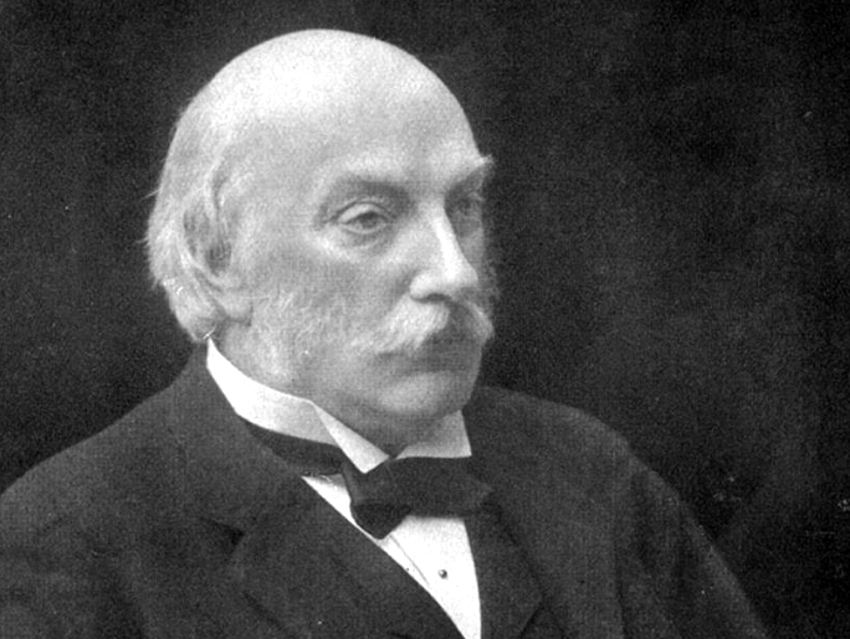John William Strutt was born on November 12, 1842, at Langford Grove, Maldon, Essex, UK, as the son of the 2nd Baron Rayleigh. He attended Trinity College, Cambridge, UK, starting in 1861 and studied mathematics. He succeeded his father as 3rd Baron Rayleigh in 1873. He spent some time managing the large estate of the family, but in 1876, he returned to scientific work and left the management of the land to his brother.
In 1879, Lord Rayleigh was appointed Professor of Experimental Physics and Head of the Cavendish Laboratory at Cambridge. In 1884, he left Cambridge to continue his experimental work at his private residence in the country. From 1887 to 1905, he was Professor of Natural Philosophy at the Royal Institution of Great Britain.
Lord Rayleigh’s early research was in mathematics, but he later focused on physics and physical chemistry. He, for example, published a two-volume work on the theory of sound [1]. He also worked on light scattering. His predecessor at the Royal Institution of Great Britain, John Tyndall, had observed a blue tint in white light after it was scattered by fine particles. Lord Rayleigh provided the first theoretical treatment of this phenomenon, which is named Rayleigh scattering in his honor [2–4]. The scattering depends on the wavelength and, thus, the color of the light. This explains, among other things, why the sky is blue. Blue light from the sun’s spectrum is scattered by the air in all directions—more effectively than other colors due to its short wavelength.
Lord Rayleigh co-discovered the noble gas argon. Henry Cavendish had observed in 1785 that air contained a very small amount of another, unreactive gas besides nitrogen and oxygen. Lord Rayleigh and Sir William Ramsay confirmed this in 1894 by removing nitrogen, oxygen, carbon dioxide, and water from a sample of air and, thus, isolating argon for the first time [5,6]. The Nobel Prize in Physics in 1904 was awarded to Lord Rayleigh “for his investigations of the densities of the most important gases and for his discovery of argon in connection with these studies.” Sir William Ramsay received the Nobel Prize in Chemistry in 1904 “in recognition of his services in the discovery of the inert gaseous elements in air”.
John William Strutt, 3rd Baron Rayleigh, died on June 30, 1919, at Terling Place, Witham, Essex, UK.
Lord Rayleigh is the answer to Guess the Chemist (90).
References
- [1] The Theory of Sound,
John William Strutt, 3rd Baron Rayleigh,
MacMillan and Co., London, 1877. - [2] XV. On the light from the sky, its polarization and colour,
Hon. J. W. Strutt,
Philos. Mag. 1871, 41, 107–120.
https://doi.org/10.1080/14786447108640452
- [3] XXXVI. On the light from the sky, its polarization and colour,
Hon. J. W. Strutt,
Philos. Mag. 1871, 41, 274–279.
https://doi.org/10.1080/14786447108640479 - [4] LVIII. On the scattering of light by small particles,
Hon. J. W. Strutt,
Philos. Mag. 1871, 41, 447–454.
https://doi.org/10.1080/14786447108640507 - [5] Argon, a New Constituent of the Atmosphere,
J. W. Strutt, W. Ramsay,
Proc. R. Soc. 1895, 57, 265–287.
https://doi.org/10.1098/rspl.1894.0149 - [6] VI. Argon: A New Constituent of the Atmosphere,
J. W. Strutt, W. Ramsay,
Philos. Trans. R. Soc., A 1895, 186, 187–241.
https://doi.org/10.1098/rsta.1895.0006
Sources
- Lord Rayleigh – Biographical,
in Nobel Lectures, Physics 1901–1921,
Elsevier Publishing Company, Amsterdam, 1967. - Lord Rayleigh,
R. Bruce Lindsay,
Encyclopædia Britannica.
Other Selected Publications
- On the electromagnetic theory of light,
Lord Rayleigh F.R.S.,
Philos. Mag. 1881, 12, 81–101.
https://doi.org/10.1080/14786448108627074 - Density of Nitrogen,
Lord Rayleigh,
Nature 1892, 46, 512–513.
https://doi.org/10.1038/046512c0
Also of Interest
- 100th Anniversary: Death of Sir William Ramsay,
ChemViews Mag. 2016.
Discoverer of noble gases and Chemistry Nobel Laureate




